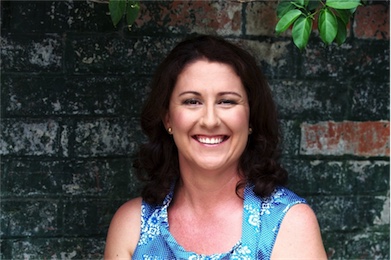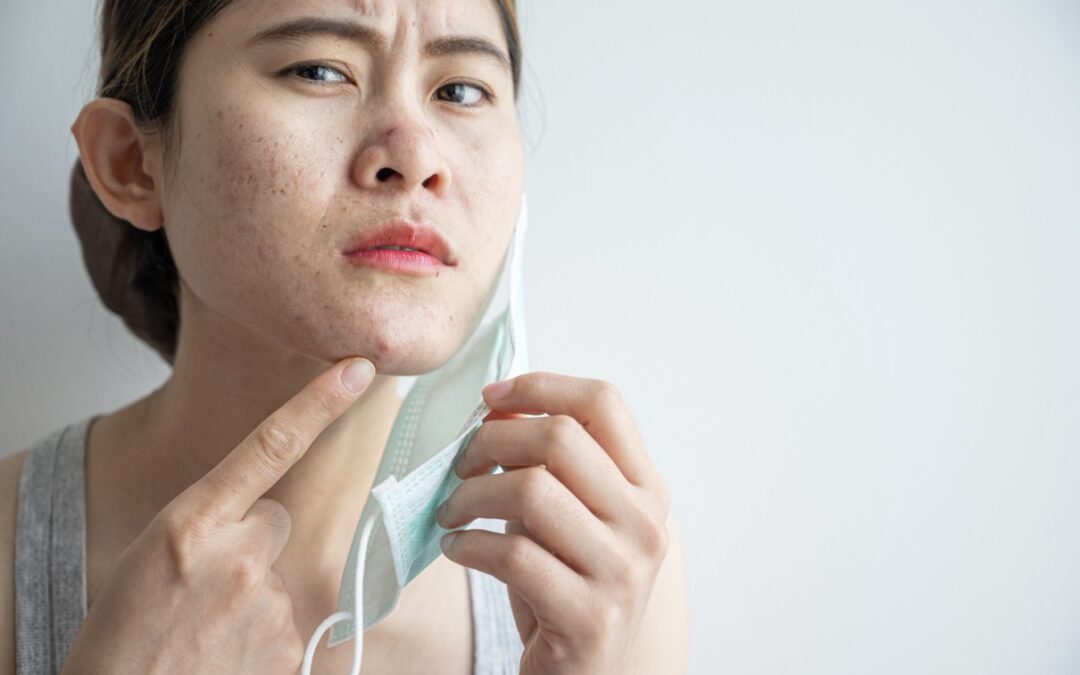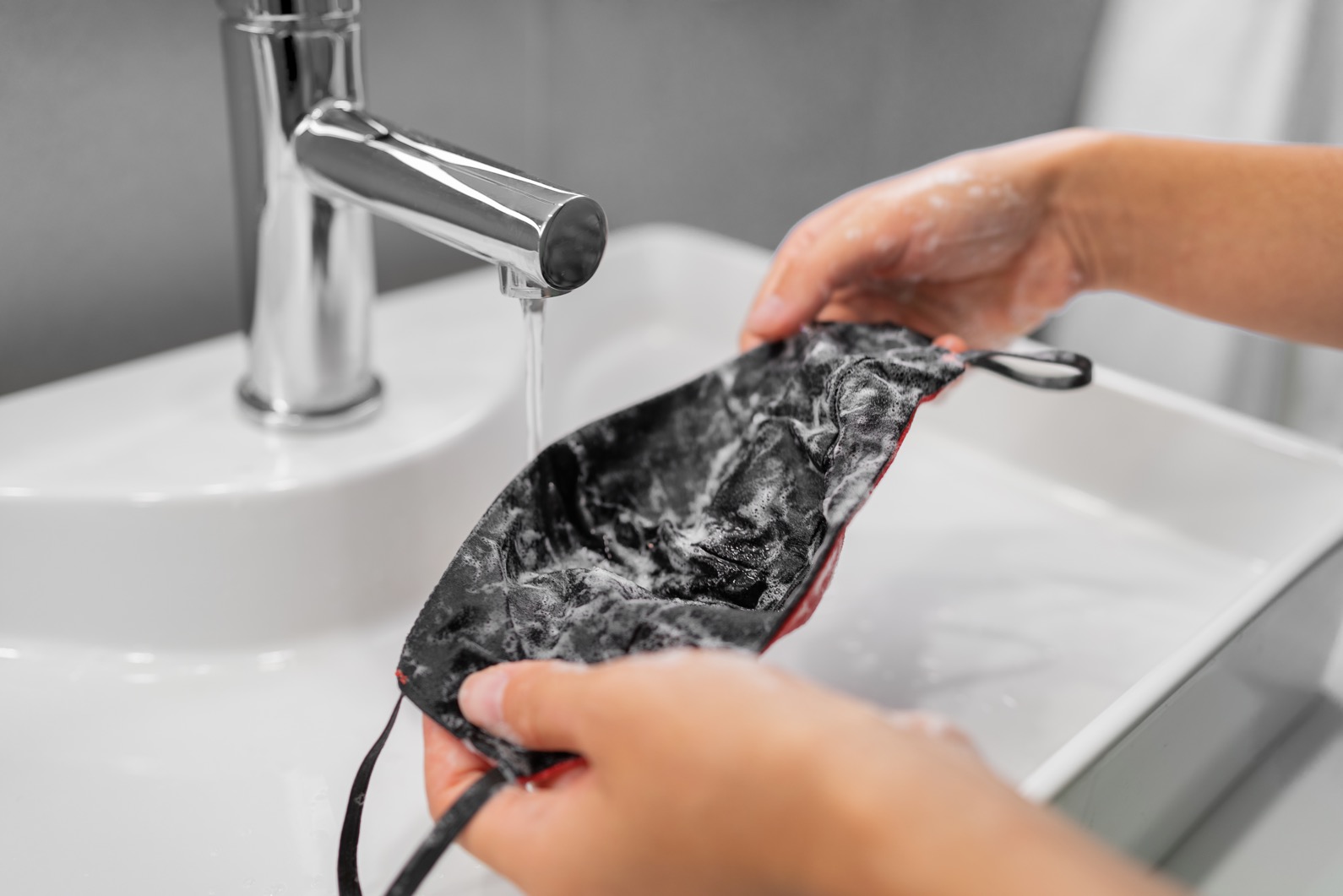Over the last 18 months, masks have become a symbol of the times we live in. They are an essential part of personal protective equipment in many workplaces and are a public health strategy for infection control.
Mask wearing can both aggravate or activate a bout of acne. Here are some practical strategies to minimize “maskne”.
What causes maskne?
Masks trap the warm air from your breath, creating a mini sauna on your face. Bacteria, fungi, and skin microbes thrive in this environment. The resulting imbalance in the skin microbiome leads to inflammation, blocked pores and pimples. The impact is worse for people who must wear masks for long periods or talk a lot while wearing their masks.
Even people who generally have good skin can get a skin flare from wearing a mask.
Contact sensitivity from the mask fabric/materials. This is more likely from the disposable ones.
Let’s not forget our old friend stress. Living through a pandemic is creating a constant low level of stress even amongst the most resilient of us. These stress hormones may make your skin more reactive than usual.
What can you do?
Mask material
Not everyone will be able to do this as some occupations will prescribe the kind of mask you need to be wearing, but if you do have an option, consider:
- Natural fabrics like cotton or bamboo. Avoid synthetic fabrics.
- Silk is suitable for sensitive skin but a little more expensive.
- If you suspect a contact allergy from disposable masks, try a different brand.
Mask fit
- Ensure the mask you choose is not too small and irritating your skin.
Change and wash frequently
- Disposable masks need to be changed at least once a day. Some occupations will require more frequent changes. I know it seems tempting to get more wear out of them from a waste perspective, but, aside from the reducing effectiveness, they become a breeding ground for all the microbes you don’t want to take up residence in your pores.
- Clean cloth masks every day in hot water and dry in the sun. It’s a good idea to have 2 or 3, so you can rotate them.
Limit your mask time
Are there ways you can reduce your time in masks? Can you do one big shop, so you don’t have to go to the grocery store every day? Meet up with friends in parks for a picnic instead of a café?
(**You must still follow all public health advice relevant to where you live.)
Moisturizers, makeup, and maskne
- Using a light moisturizer under a mask can help protect the skin. Choose one with calendula, aloe vera or tea-tree to reduce the risk of breakouts.
- Limit heavy makeup and choose lighter formulations or skip it altogether.
Take care of your skin.
If you have acne-prone skin, you’ll undoubtedly be on top of this already, but here’s a friendly reminder. When you get home for the day, gently cleanse and moisturize your skin instead of waiting until later in the evening.
Treat any spots as soon as they appear with a dab of either lavender or tea tree essential oil. Test first, though, to see you’re not reactive.
Take care of your broader health
Also, remember, the better overall health correlates to a more robust and resilient skin barrier more able to cope with mask-wearing. So also remember to stay hydrated, eat nutritious foods and get plenty of sleep.
Of course, the ultimate cure for maskne is not to need a mask, and hopefully, we get to that place soon.
Now, over to you. Have you got any tried and tested tips and products that’s helped with your maskne? Leave me a comment below.
If you enjoyed this article, you might also like:
Is leaky gut causing your acne?

Need help with your acne?
Norelle Hentschel is an experienced Naturopath with a clinic in Stones Corner, South East Brisbane and also offers Telehealth consults Australia wide. She enjoys supporting her clients to get lasting clear skin.
Want more articles like this?
Join us at Your Skin Remedy – the monthly missive for healthy skin from the inside out. Practical, actionable, and informative. Your clear, glowing skin starts here.
PS. Your inbox real estate is precious. Your Skin Remedy is pitch and promo free. I promise. One email a month — that’s it.


